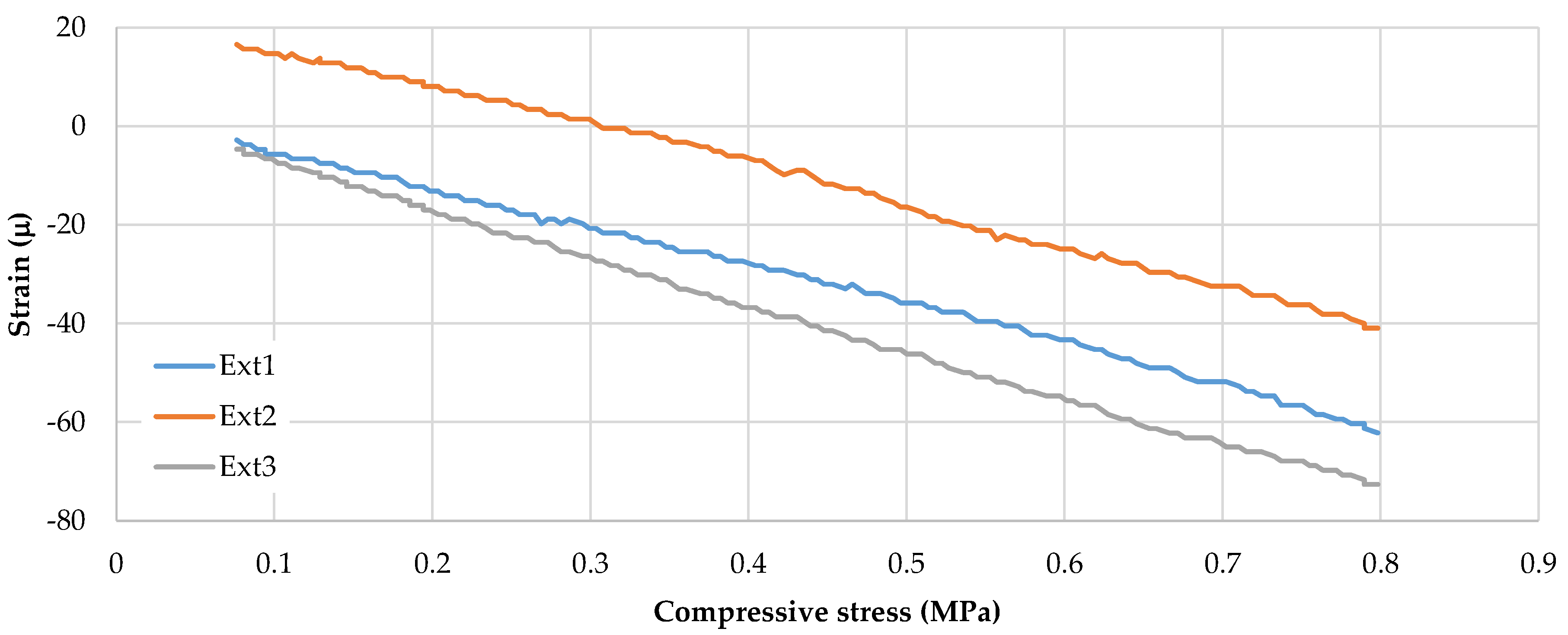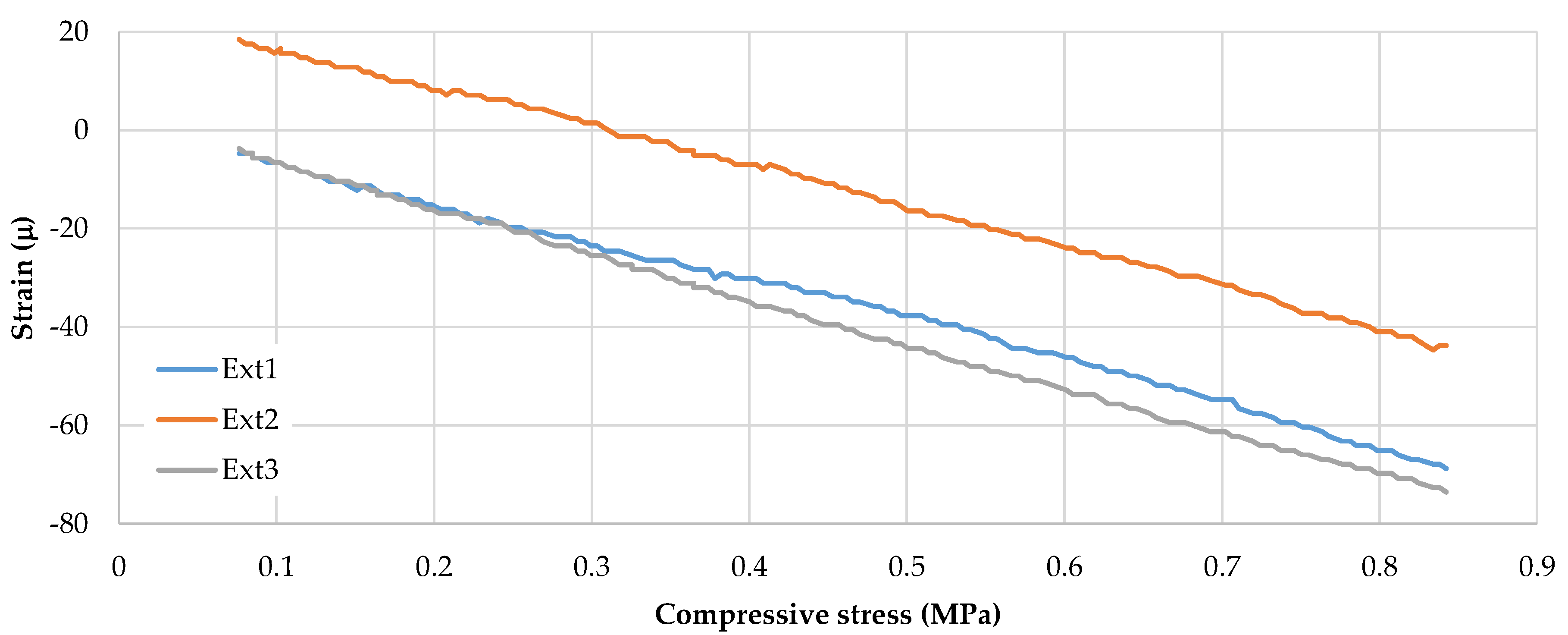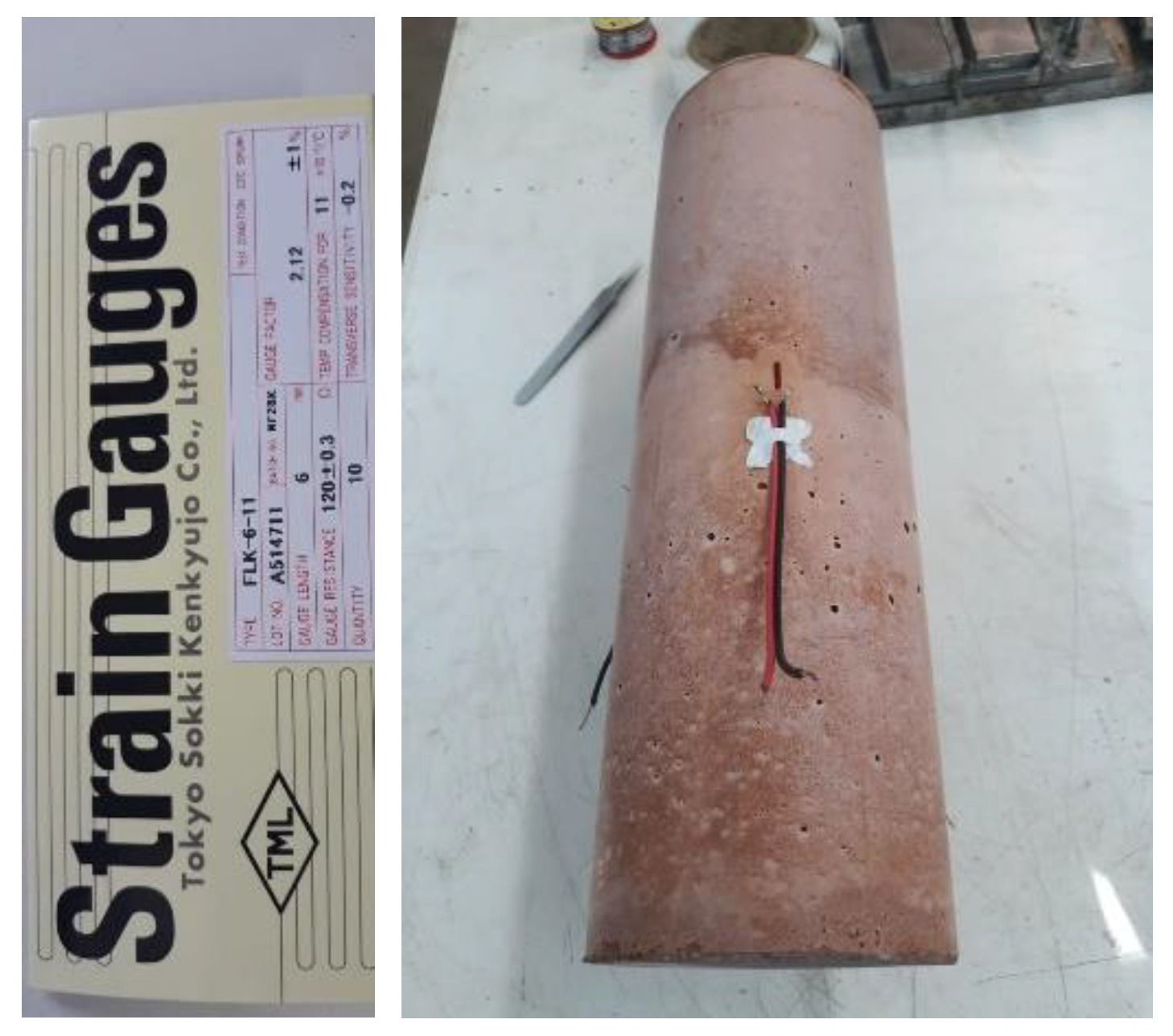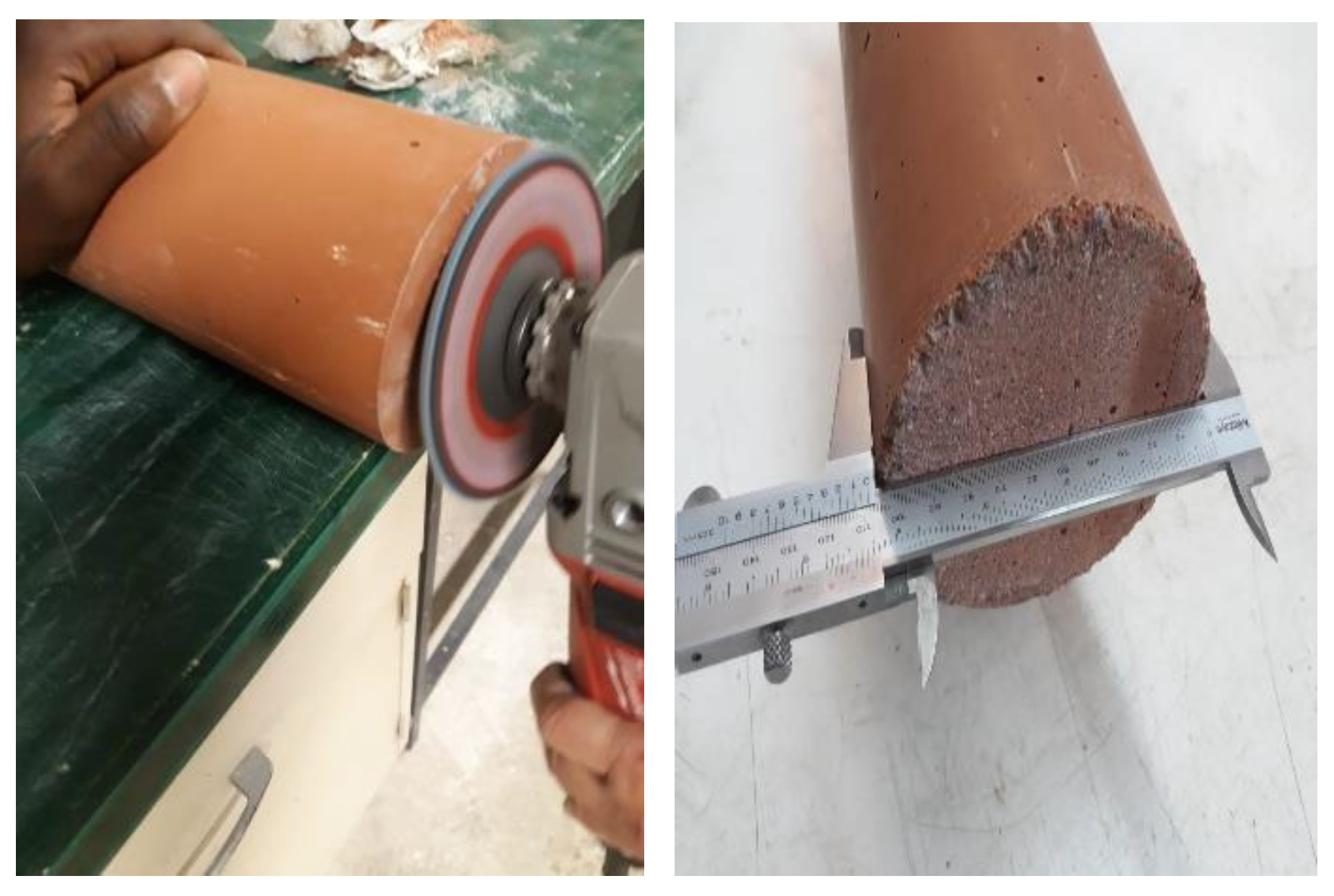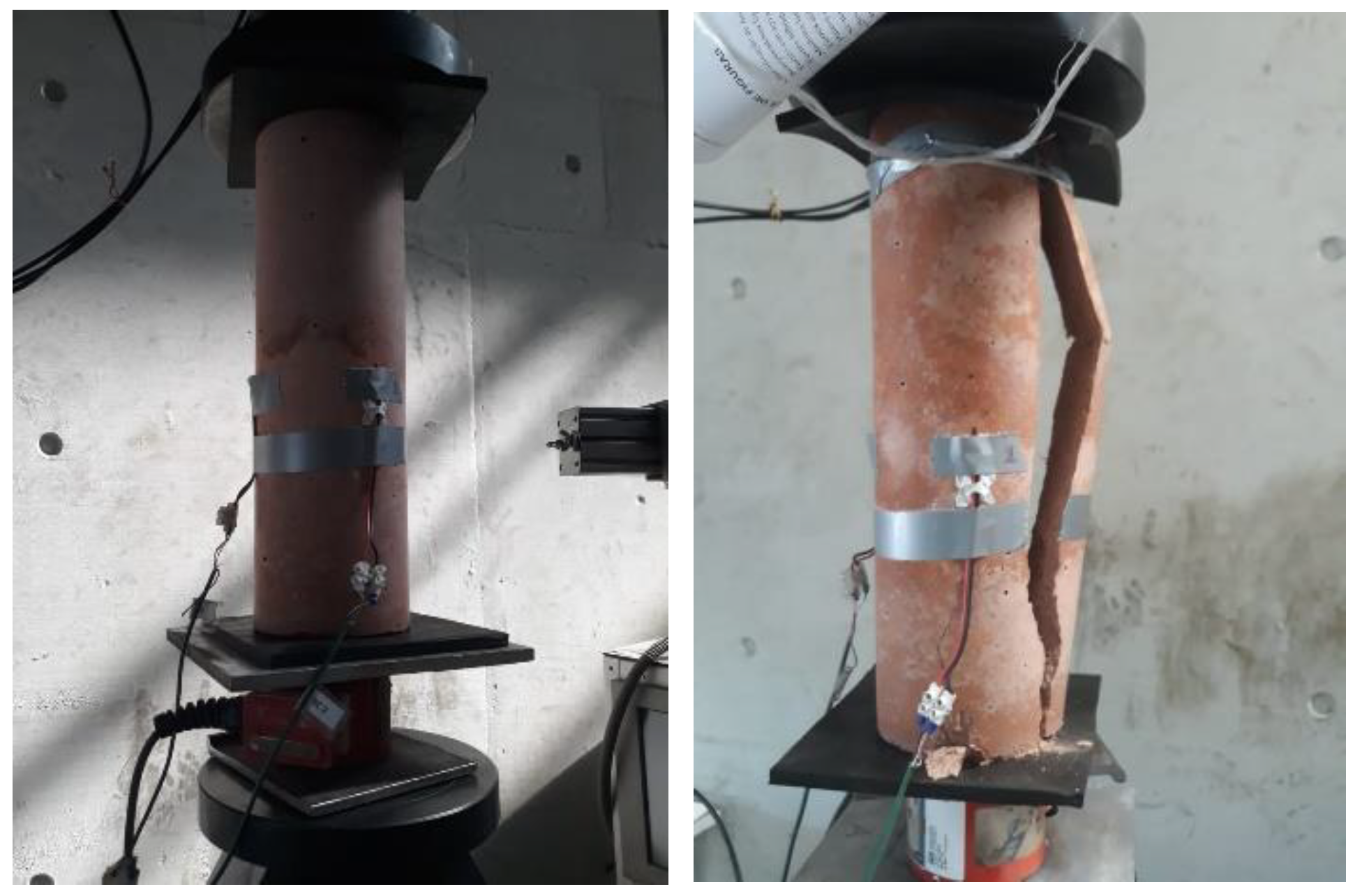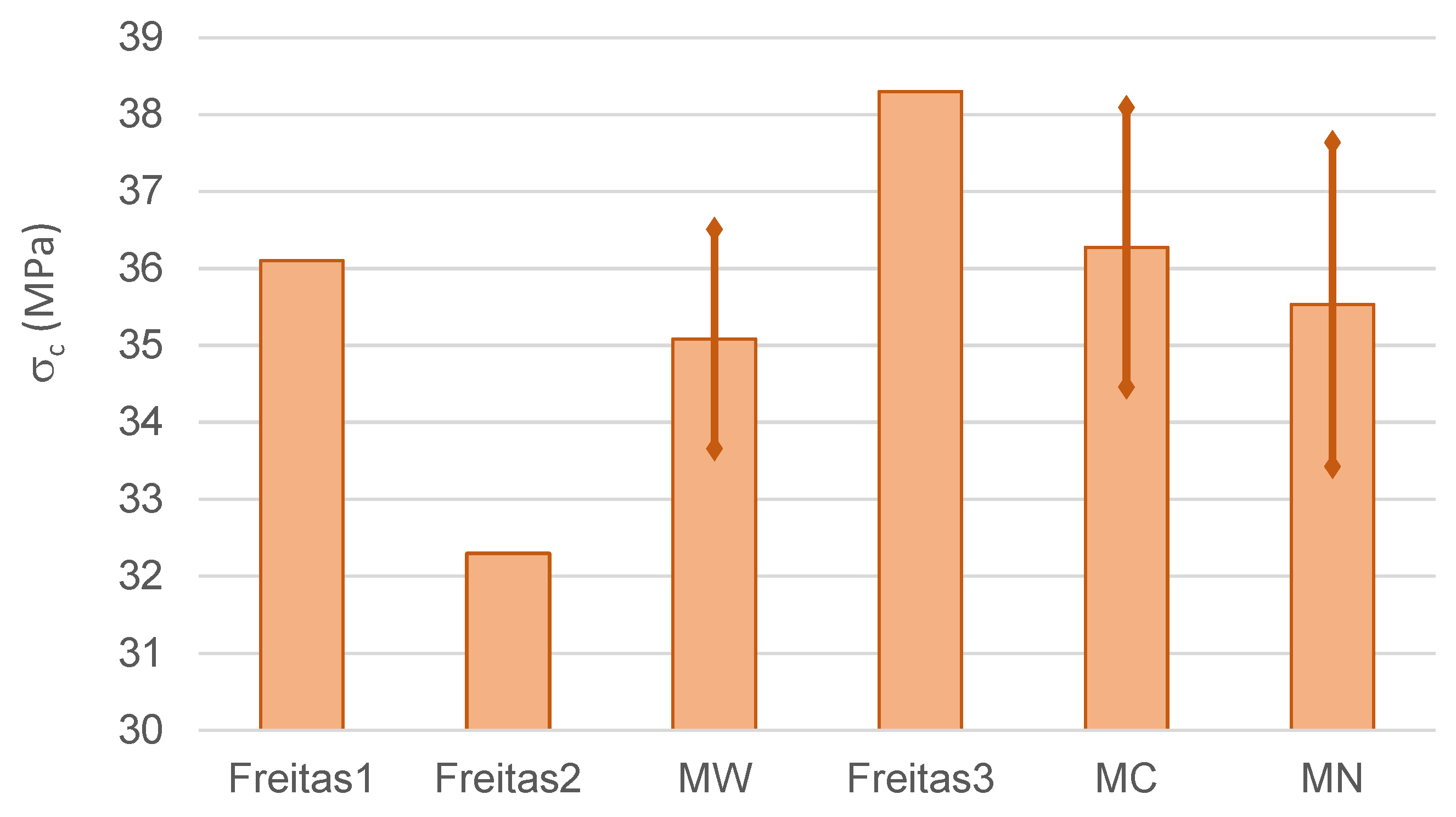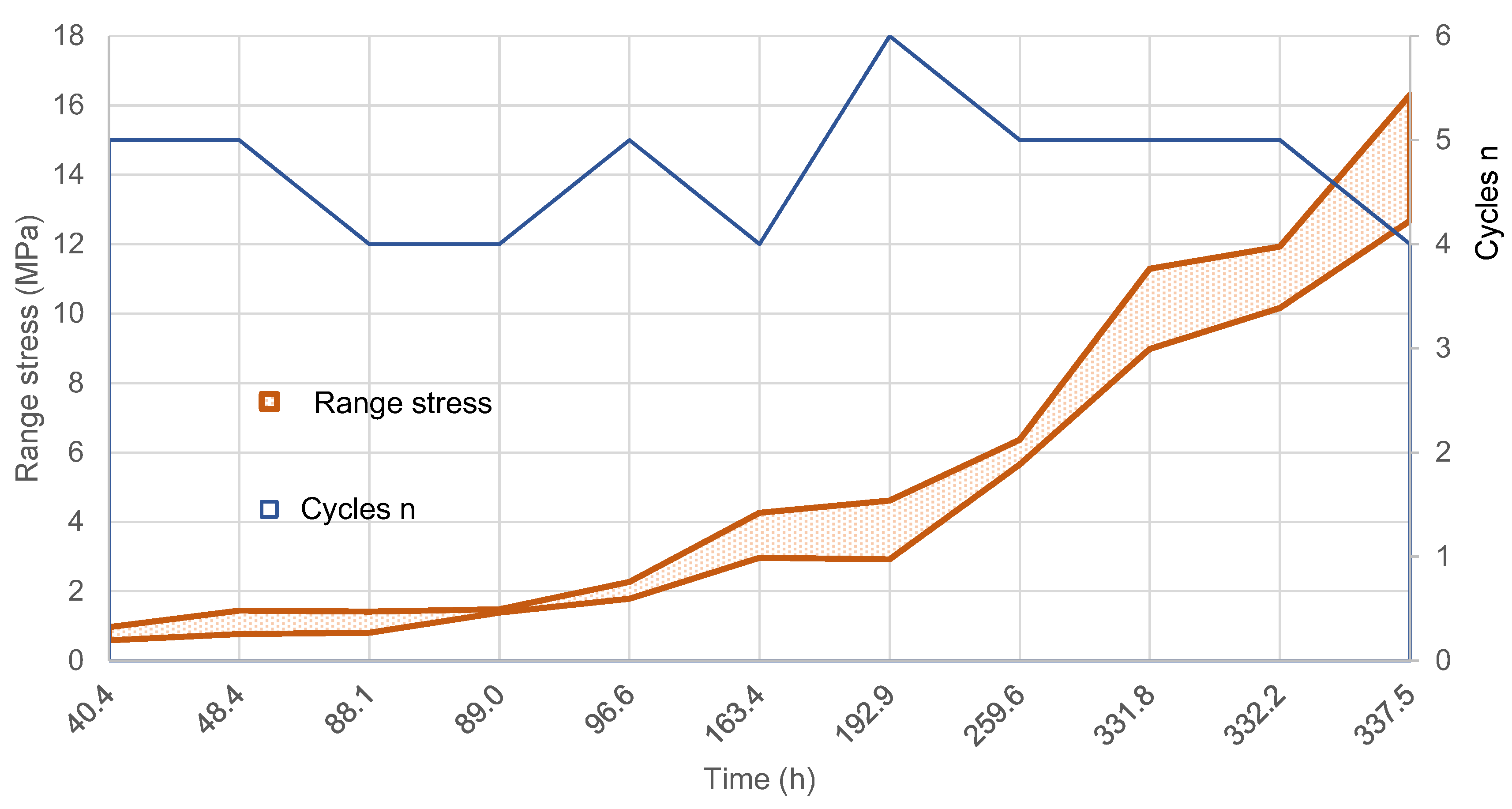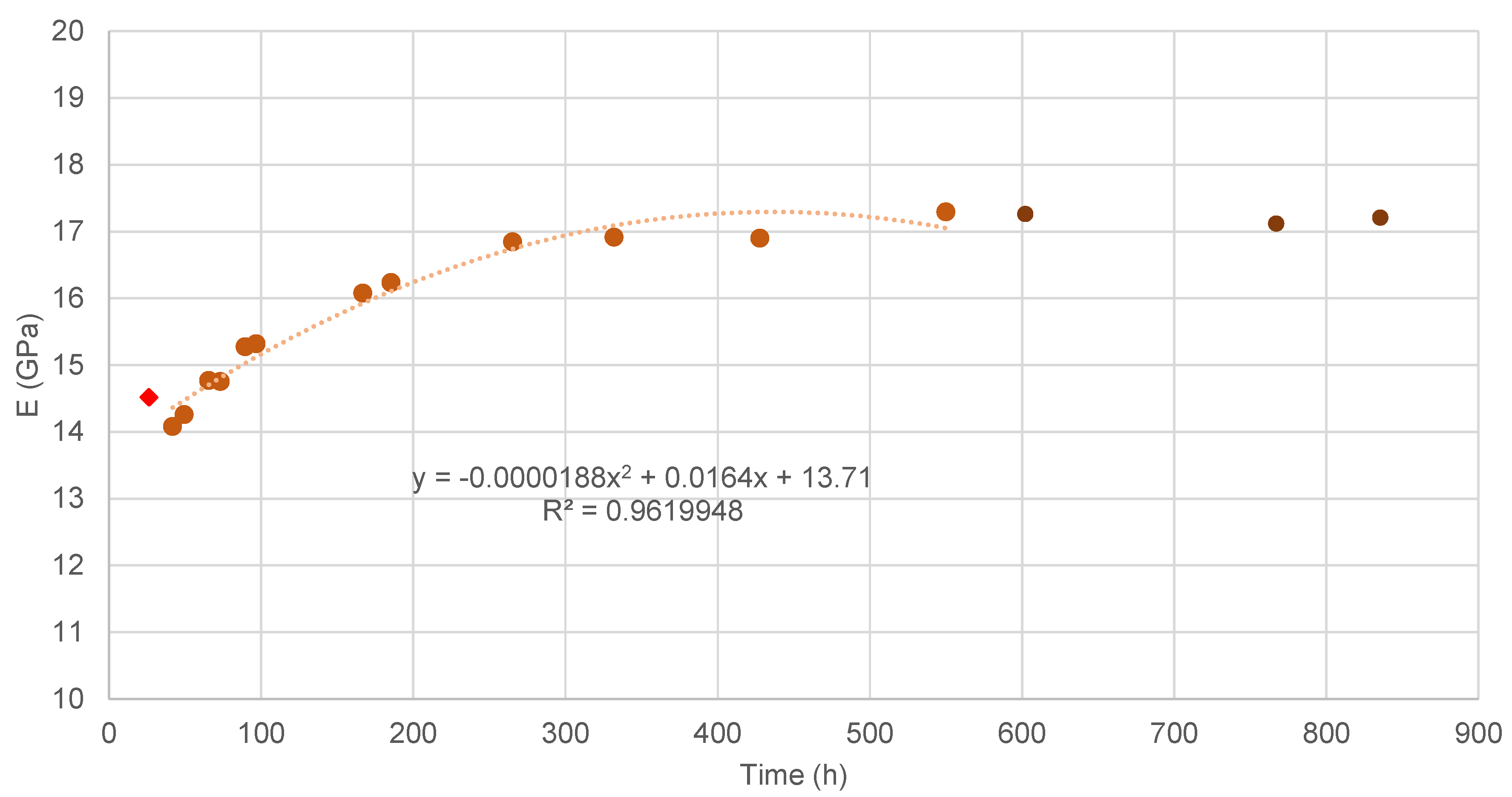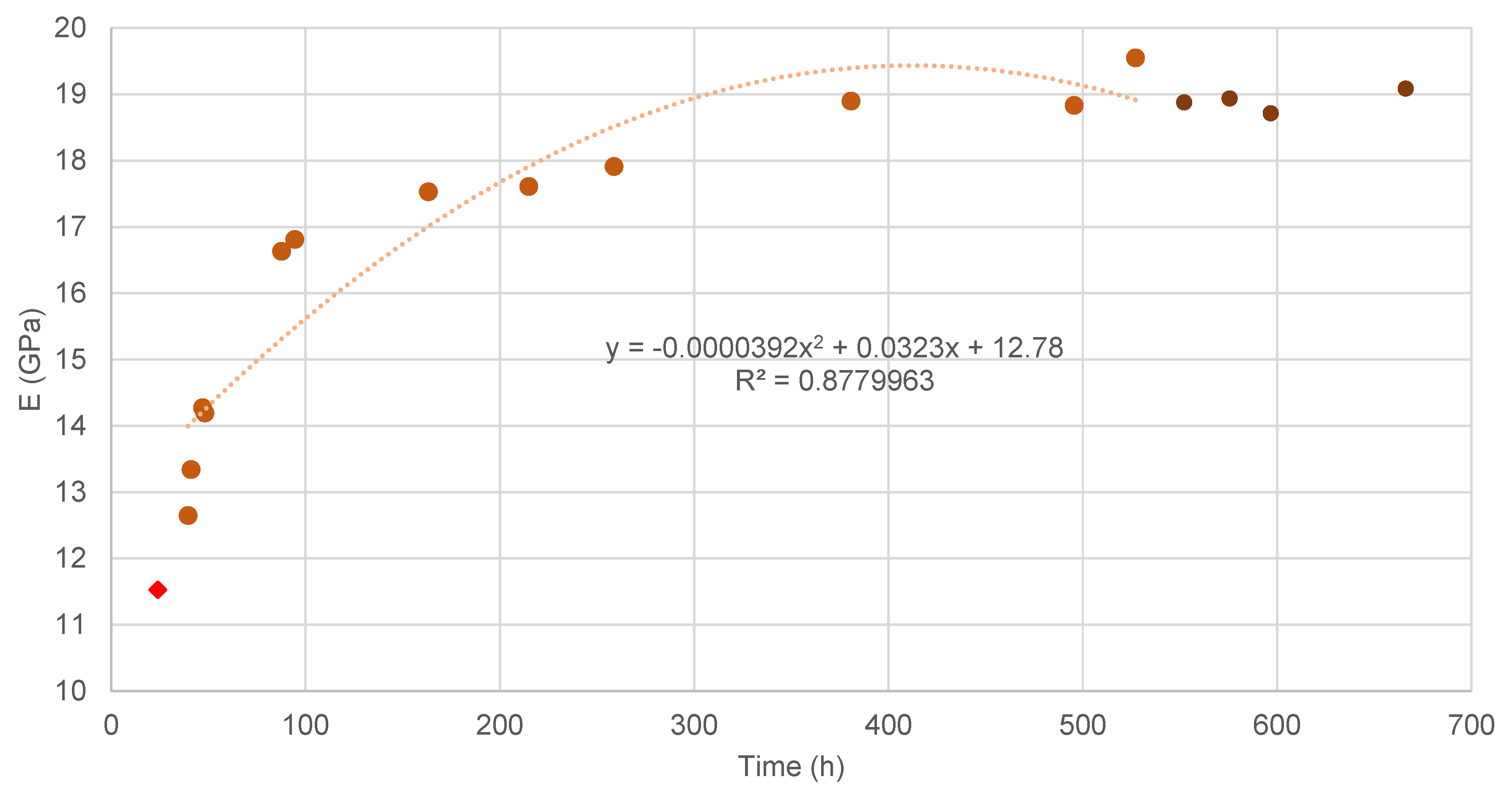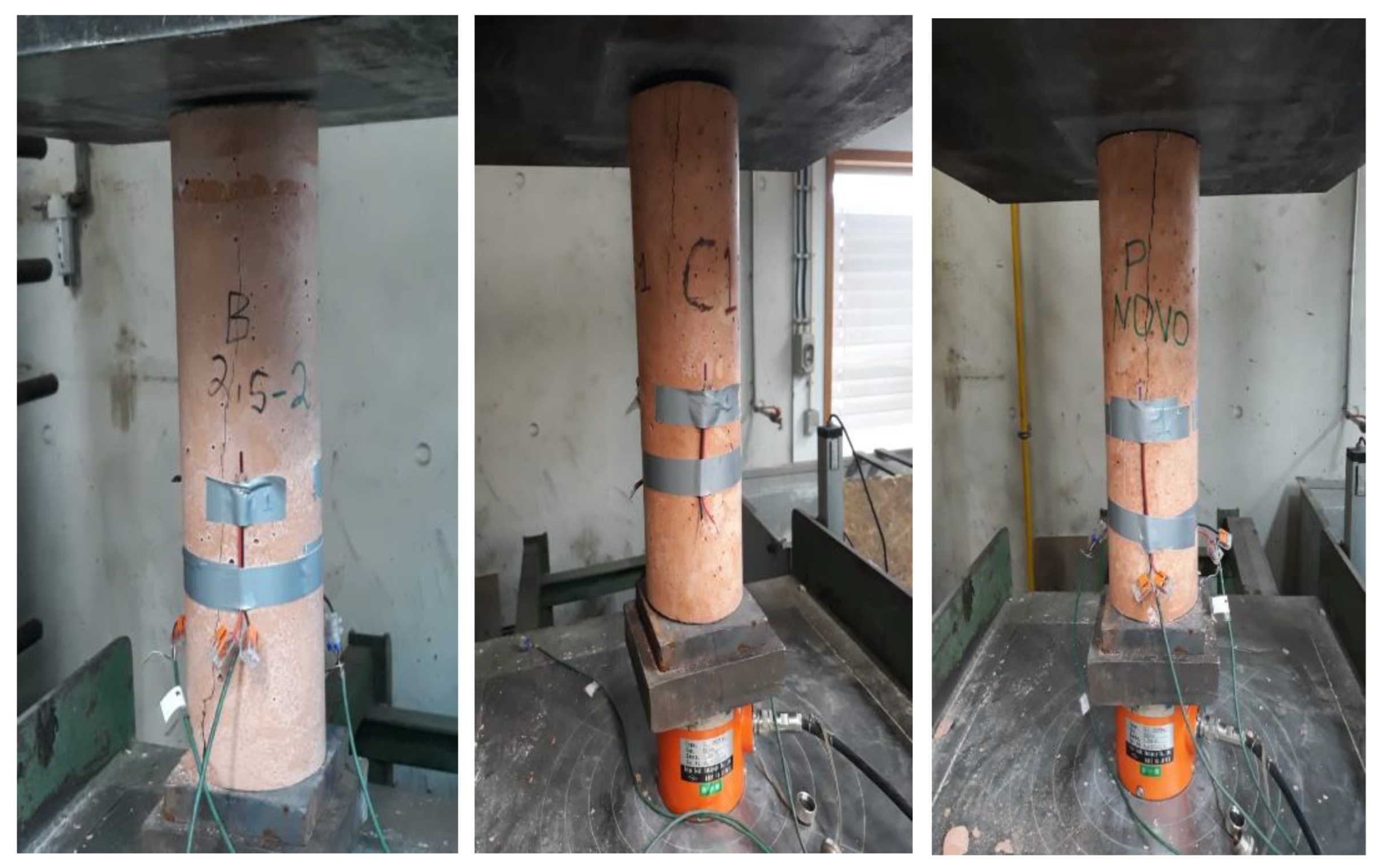2.1. Materials
Metakaolin (brick paint) was supplied by the French company Argeco Développement. According to the company, it was subjected to a dehydroxylation reaction at a temperature of 750 °C and the metakaolin particles have a diameter of less than 90 µm [
22].
The sand used is natural sand from the Coimbra region with a density of about 1650 kg/m
3 and a specific gravity of about 2600 kg/m
3. The sieve analysis of the sand is shown in
Table 1. The grain size distribution line is shown in
Figure 1.
The gravel (from the company Betão Liz [
23]; GPS: 40.255788, −8.444268) was supplied in the form of tout-venant. For the present work, limestone gravel was chosen, sieved through a 4.75 mm sieve and retained on a 2 mm-diameter sieve (
Table 1 and
Figure 1). The standard EN 196-1 [
24] recommends this dimension for the maximum allowable diameter of aggregates in relation to the construction of prismatic specimens built for this work: 160 mm × 40 mm × 40 mm.
An alkaline activator was used to activate the binder (metakaolin), which consisted of sodium hydroxide (NaOH) and sodium silicate (Na
2SiO
3) in a 1:2 ratio. To produce sodium hydroxide solutions (10 M), pellets with 98 % to 99 % purity were dissolved in tap water until the target concentration was reached; 1 weight of sodium hydroxide with 2.5 weight of water. Sodium silicate was purchased from the company “Sociedade Portuense de Drogas, S.A.” [
25], under the name sodium silicate D40. Its chemical composition is indicated in
Table 2.
The fineness modulus of the filler is 0.063 µ, the moisture content is 0% and the specific gravity is 2810 kg/m
3. It was provided by the production company Comital [
26].
2.2. Mixtures
Three different mixtures were performed to prove certain resistant properties of geopolymers. The first one, defined by MW (
Table 3), was previously used by Lopes et al. [
8] and Oliveira [
10]. The indicated quantities allow the production of 6 parallelepiped specimens of 160 mm × 40 mm × 40 mm. The mix proportion (aggregate:binder:activator) is shown in
Table 3 (2nd line). The second mixture, MC, was developed by Freitas [
13]. This mixture contains limestone crushed through a 4.75 mm sieve and retained on a 2 mm sieve. The constituent of the mixture is listed in
Table 3.
Finally, a new mixture was created that improved the granulometric line of the previous mixtures. As is known from the study of concrete, granulometry determines the compactness of concrete and thus its physical and resistance properties. The higher the compactness of granulometric compositions, the lower the volume of voids between particles and the greater the possibility of reducing the volume of the mixture. Higher compactness favors obtaining a more resistant concrete with low porosity, low shrinkage, and high durability [
27]. The most compact granulations are obtained with a high percentage of coarse aggregates, and in this sense the mixing requires lower quantities of binder, while on the other hand, the maximum dimension of the aggregates is limited by the free dimensions of the pieces to be concreted. On the contrary, a less compact granulometry leads to concrete with low workability, which crumbles easily. In this sense, it is necessary to adapt the mix to an optimal content of fine aggregates [
27].
So, the last objective of this new mixture was to improve the resistance of the mixtures. In fact, the granulometric line of the MC mixture has deficiencies in terms of the percentage of finer particles. This deficiency is aggravated in the MW mixture. Therefore, in this blend, part of the sand and gravel was replaced by fillers. The constituents of the new blend are listed in
Table 3.
2.6. Experimental Methodologies
The tests performed to determine the mechanical strength of the specimens and the modulus of elasticity were carried out in accordance with applicable standards: EN 196-1 [
24], EN 12390-13 [
30], EN 12390-3 [
31], and EN 12390-5 [
32].
The flexural strength test was the first to be performed on parallelepiped specimens according to EN 12390-3 [
27]. The two resulting “halves” constitute the compression test specimens. A Servosis ME -402 series electromechanical compression machine and one load cell (CLC—200 kN) were used for this purpose. The equipment was completed with a data logger (TSD-602; to record the load and strains) and two 8 mm neoprene sheets. The tests were performed with a deformation control planned in two different phases: first, the action was applied at a rate of 0.1 mm/s up to a load of about 0.3 kN; then, at a rate of 0.004 mm/s, up to failure. The test lasted for about 3 min. In the compression test, the action was first applied at a rate of 0.1 mm/s up to a load of about 3 kN; then the rate was reduced to 0.013 mm/s, up to failure. The test lasted for about 3 min. Suitable equipment was also used in this compression test, with two square compression plates of 40 mm on each side. The generation of the cones was checked; a requirement specified in standard EN 12390-3 [
27].
The tests to determine the modulus of elasticity were performed on the cylindrical specimens. The methodology used is based on an adaptation of method B, which is described in standard EN 12390-13 [
30]. Before the actual test, the top and bottom surfaces of the specimens had to be straightened: They should be flat and perpendicular to the axis of the sample (
Figure 4). This is to ensure an even distribution of stresses on the surfaces of the sample. In this context, it is important to mention five other strategies that were used to perform the test:
Use of specimens long enough to relieve possible stress concentrations;
Use of three strain gauges that guarantee the reliability of the average strain values;
Use of neoprene rubbers to eliminate possible surface irregularities;
The hinge that can partially eliminate possible deviations of these surfaces from the normal to the axis of the specimen; and
When placing the specimen, care was taken to place it centrally to ensure an even distribution of the load on the specimen.
The “setup” of the test began by placing a washer and a metal plate on the bottom plate of the compression machine (
Figure 5). The washer forms a partial hinge that, along with the hinge on the top plate of the Servosis electromechanical press, helps to center the action. Then, the load cell (for measuring the axial force) and another metal plate is placed. The specimen was finally placed between this last metal plate and the upper plate of the press, together with the neoprene sheets (8 mm), one on each side.
The most important result of the tests to be performed was to determine the time evolution of the elastic modulus. But in this series of tests there were several alternative objectives. From the beginning, it was important to ensure that each test would take place in an elastic regime to ensure the integrity of the sample for the next test. It was also interesting to understand the extent to which it would be possible to guarantee this integrity, i.e., at what stress level would the behavior plastic degrade the sample. It was also interesting to see if the test load ratio would in any way affect the value of the modulus of elasticity. Considering these and many other issues, it was determined that the test methodology used in this work deviated from the above standard.
Another point that can already be highlighted as complementary to the provisions of method B in, standard EN 12390-13 [
30], concerns the load ratio chosen for the tests. As an alternative to the use of increasing stress, as recommended in the standard, the tests were performed with deformation control. Obviously, there is a dependence between the strain rate and the applied stress rate. In any case, much lower load ratios than those recommended in the standard were chosen from the outset to ensure the integrity of the sample.
Also, as can be seen in the next section, this methodology was updated during the tests, as some answers were found, and new questions arose.
Regarding the operationalization of the test, it is important to add the following. After centering the specimen in the testing machine, a preload was applied for visual inspection of the strain gauges, as provided for in the standard. Similar strain steps on the three strain gauges would guarantee the centering of the specimen. If necessary, the specimen was fully unloaded, and its position corrected. After correcting the positioning, the test was ready to start.
Thus, each test was divided into two parts: In the first part, the preload cycles were performed, and in the second part, the load cycles were performed. The maximum compressive stress should have been limited to fc/3, and maintained for about 60 s. This limit was not always met. At this time, fc would represent the expected value for the maximum compressive stress of the sample. During unload, a similar deformation rate was selected down to a residual stress, of the order of 0.5 MPa, to avoid decentralization of the sample. After unloading, an interval of about 30 s would be expected.
As mentioned above, in this work a slightly different methodology was used than the one given in standard EN 12390-13 [
30]. In this standard, the test allows the evaluation of the maximum value of the modulus of elasticity in a single time, that is, a single test on the sample with 28 days of maturity. In this work, the methodology consisted in assessing the time evolution of the modulus of elasticity through tests performed punctually on different days of curing of the sample. Thus, the average value of the modulus of elasticity under compression, on a given curing day, is obtained from the average values obtained from the loading cycles considered. In turn, the average value E
m in each loading cycle is determined by the average change in stress Δσ, with respect to change in strain Δε, i.e.,
It is important to emphasize again that, although this work is based on an extensive set of standards, the methods used in the tests have been successively adapted to meet not only the main objective of the work, but also other issues raised, namely the influence of the strain rate imposed on each loading cycle.
